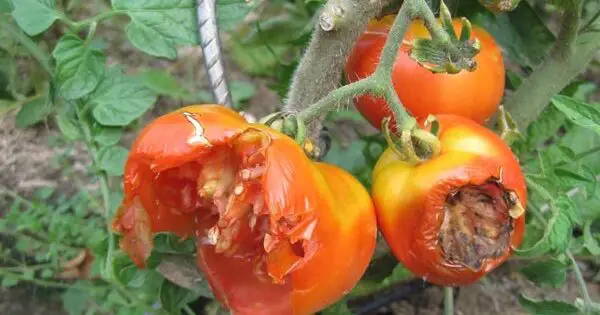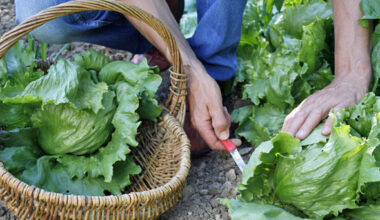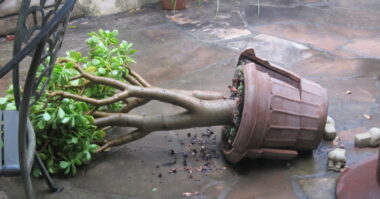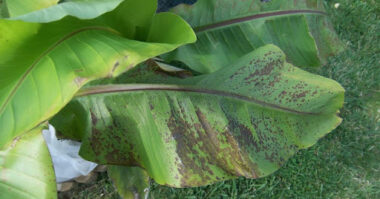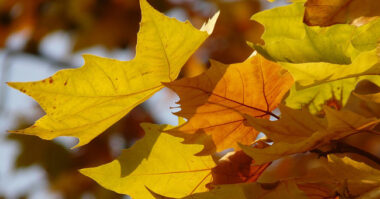The tomato is one of the most cultivated plants in the garden, but unfortunately it is prey to many pests that cause damage and compromise the harvest.
Green or mature tomatoes are very appetizing “food” for several species of birds. During their feeding, the numerous pecks cause more or less deep lesions in the fruits.
These lesions are entry points for many micro-organisms, and in particular various moulds, which can colonize them and lead to rotting.
Bird damage is sometimes considerable in production areas where they are abundant.
Contents
Insects that eat tomatoes
Disease is not the only threat to tomatoes. There are also insects. Fortunately, not all of them are harmful. Many are even allies in the fight against those that attack your plants
Here’s a quick look at the top 5 pests
1. Moth larvae
What they are
These larvae feed at night and attack young plants. They gnaw on the trunk at the base and are difficult to spot.
What to do about them?
Protect the base of your plants by wrapping them with a toilet paper roll for example. The plants are more resistant to attacks after the first 6 weeks. Wait before transplanting your plants in place.
2. The caterpillar of the tobacco sphinx
What does it do?
This caterpillar is a threat to all solanaceous plants (eggplant, tomato, tobacco, …) and can destroy an entire plant in one night. Fortunately, it is only present on the American continent (I have included it in the list anyway because I know I have some faithful readers across the Atlantic). Measuring about 3 inches, its green color makes it hard to spot on the stems. It is also active at night and moves from plant to plant.
What to do?
Ichneumonidae are their natural enemies. These insects lay their eggs on the caterpillars. When the eggs hatch, the young larvae feed on the caterpillar. As adults, they start laying eggs and their offspring also start protecting the plantations.
Ichneumonidae can be ordered on the internet and are often used in biological control. The smell of marigolds also repels the tobacco hornworm. So don’t hesitate to sow or plant them everywhere.
3. Colorado beetle
Who are they?
Native to America, Colorado beetles feed on solanaceous plants such as potatoes. If potatoes are not available, they will eat tomatoes, eggplants and other plants of the same family. The insect is about 1 inch long and can be recognized by the yellow and black lines on its wings.
Adults eat the leaves. The females lay their bright yellow or even golden eggs under the leaves. As soon as they hatch, the larvae wreak havoc on the plants and can wipe out entire crops. The larvae are red with black spots and hide under the leaves during the day.
What to do?
Adult beetles are easy to catch by hand. To control the larvae, apply pyrethrum in early spring.
4. Bugs
Who are they?
You’ve probably already noticed them. They are everywhere in the garden and are harmful to tomatoes. The brown marmorated stink bug feeds on the juice of tomatoes and its bite causes yellow spots or irregularities on the fruit. When the fruit is cut, a white area can be seen under the yellow spot inside the tomato. This helps distinguish the damage caused by bugs from a virus or mold attack.
What to do
There are specific traps to catch the bugs without killing them but it is also possible to catch them by hand and keep them away.
5. Weaver mite
How to recognize it?
The weaver mite is a tiny mite almost invisible to the naked eye. Its damage, however, is very visible, too much so. It walks between the trunk and the leaves of the plants and pierces the leaves to feed on their juices. The plant is covered with small spots and silky webs, the leaves turn brown and eventually fall off.
Remedies
The best way to control this pest is to spray neem oil or a mixture with soap (water, 2% organic liquid soap and 1% alcohol (vodka for example)).
Birds that eat tomatoes
Birds can be a problem for tomatoes, especially in dry weather. Attracted by the red color of the tomatoes, they jump on them to quench their thirst. Protect your plants by covering them with a net. Place water-filled bowls in the garden for birds and other animals to drink from.
How do I keep birds away from my tomatoes?
Birds are generally very helpful in the vegetable garden, especially passerine birds. They and their young will feed on a large number of insects and larvae, which will contribute to the health of your garden. However, other birds such as pigeons, crows or seagulls can cause great damage.
Damage caused by certain birds
Large birds such as pigeons will attack newly sown seeds that are in the process of germinating, as well as young shoots and well-developed leafy vegetables such as lettuce, cabbage and peas.
On the side of the fruit trees, it is the blackbirds which will be able to make disappear, as by magic, in a few hours, all the tomatoes, without forgetting also the currants, the blackcurrants, the strawberries and raspberries… What they like is the freshness of the water contained in all these fruits, especially if the weather is a bit dry.
Scaring off pest birds
There are preventive bird control techniques to keep birds away from your garden when fruit season arrives.
Dotting your vegetable beds with thin hazelnut or bamboo stakes will prevent birds of that size from being able to land among your plantings.
You can also create hedges with berry bushes so that the birds are attracted to them rather than to your fruit. Or, put saucers of water for them to hydrate, but this may increase the risk of mosquitoes…
